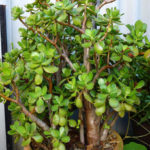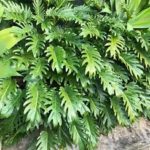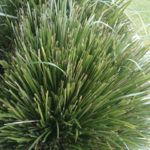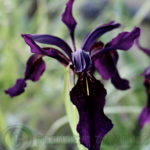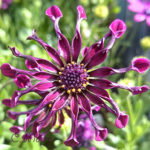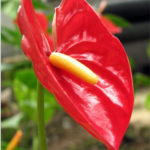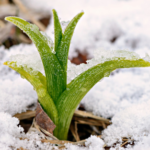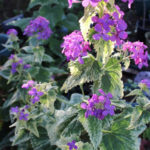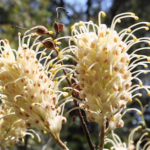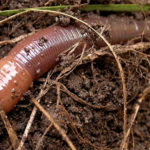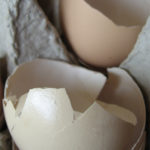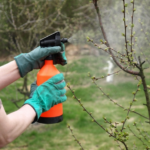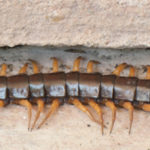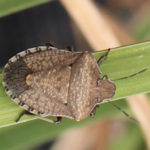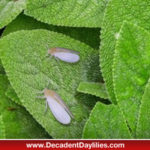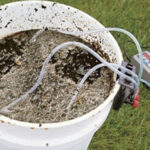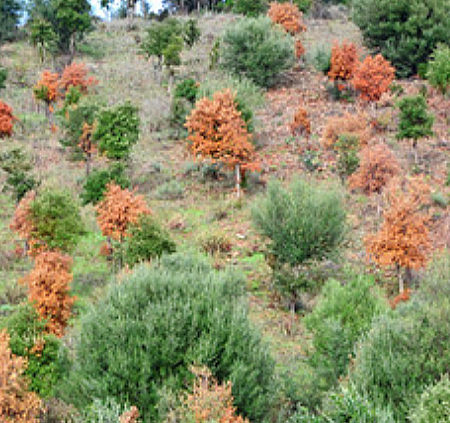
Phytophthora Dieback Natives Ornamentals
Symptoms Treatment and Prevention of Phytophthora Dieback
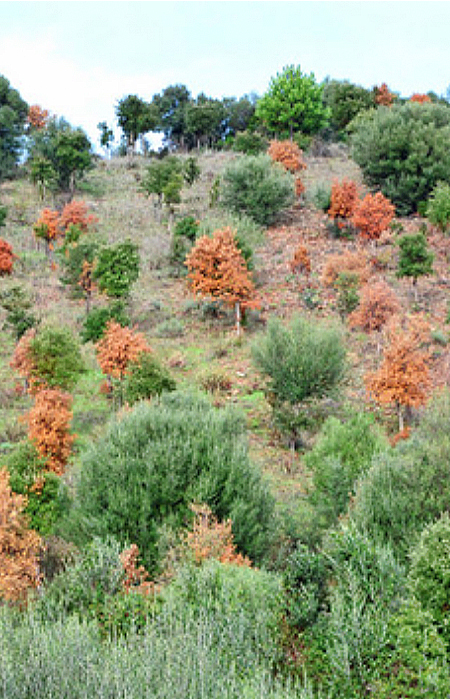 Dieback of plants is the symptom of Phytophthora infection. The plant pathogen called Phytophthora cinnamomi is the cause for dieback. This plant pathogen specifically attacks the root system of plants like zamia palms, azaleas, roses, grass trees, avacados. Australian natives that are highly susceptible are jarrah, wattle, grevilleas and banksias. This soil-borne water mould affects about 40% of the native plants in Western Australia and more than half of endangered species in the region. Agricultural as well as garden plants get affected by Phytophthora. This mould is highly invasive and even moving a small amount of soil containing the mould can spread the infection.
Dieback of plants is the symptom of Phytophthora infection. The plant pathogen called Phytophthora cinnamomi is the cause for dieback. This plant pathogen specifically attacks the root system of plants like zamia palms, azaleas, roses, grass trees, avacados. Australian natives that are highly susceptible are jarrah, wattle, grevilleas and banksias. This soil-borne water mould affects about 40% of the native plants in Western Australia and more than half of endangered species in the region. Agricultural as well as garden plants get affected by Phytophthora. This mould is highly invasive and even moving a small amount of soil containing the mould can spread the infection.
Symptoms
The symptoms of Phytophthora dieback infection vary for plant parts above the ground and below the ground. The symptoms on plant parts above the ground are
- Wilting and yellowing of leaves and dieback
- Woody stems develop canker and wilt
- Rotting of growing points
- Decreased fruit size
- Gum exudation from fruits and stems
- Decline in plant yield
Below the ground
- Roots show soft rot of cortex
- Root cankers leading to plant death
As the dieback attack spreads faster in landscapes, the symptoms include
- Quick death of host plants
- Greater plant deaths during dry weather conditions
- Declined diversity of plants in ecosystems
- Changes in the structure and function of the ecosystems
Causes
The mycelia of the fungus spread through the root and start absorbing carbohydrates and other nutrients needed for plant growth. This causes the death of root tissues as they will be unable to absorb nutrients and water.
- The main cause of the spread of Phytophthora is soil or growing medium contaminated with the Phytophthora spores
- Soil with poor drainage and low in organic nutrients
- Warm moist soil provides ideal spore production condition
- The disease spreads through water, infected soil, and the root to root contact of the plants
- Movement of vehicles. The footwear of humans also helps in the spread of spores
Treatment
It is not easy to eradicate Phytophthora once they infect an area. using fungicides such as Phosphonates can increase the resistance of the plants to dieback disease. The fungicide is ineffective in killing the pathogen. During the active growing months of the fungus, spraying phosphates gives better protection to the plants.
Prevention
To prevent the Phytophthora infection from spreading to further areas, critical management of the disease is necessary. The spreading can be prevented by
- Preventing the movement of spores in the soil and water
- When moving in or out of garden or landscape areas use clean shoes
- Before start working with garden tools or agricultural tools dip the tools in 70% alcohol to ensure that there is no contamination.
- Clear the debris and the infected soil
- Wash down vehicles, and other equipment
- Planting in raised beds and following crop rotation
- Soil solarisation can kill the mycelia
- Use plant materials which are resistant to infection
- Clean the pots prior to use and sterilise them using a disinfectant solution
- Avoid overwatering and splashing water on leaves in infected areas
If you are using fungicides to control the infection, use according to the instructions provided.


